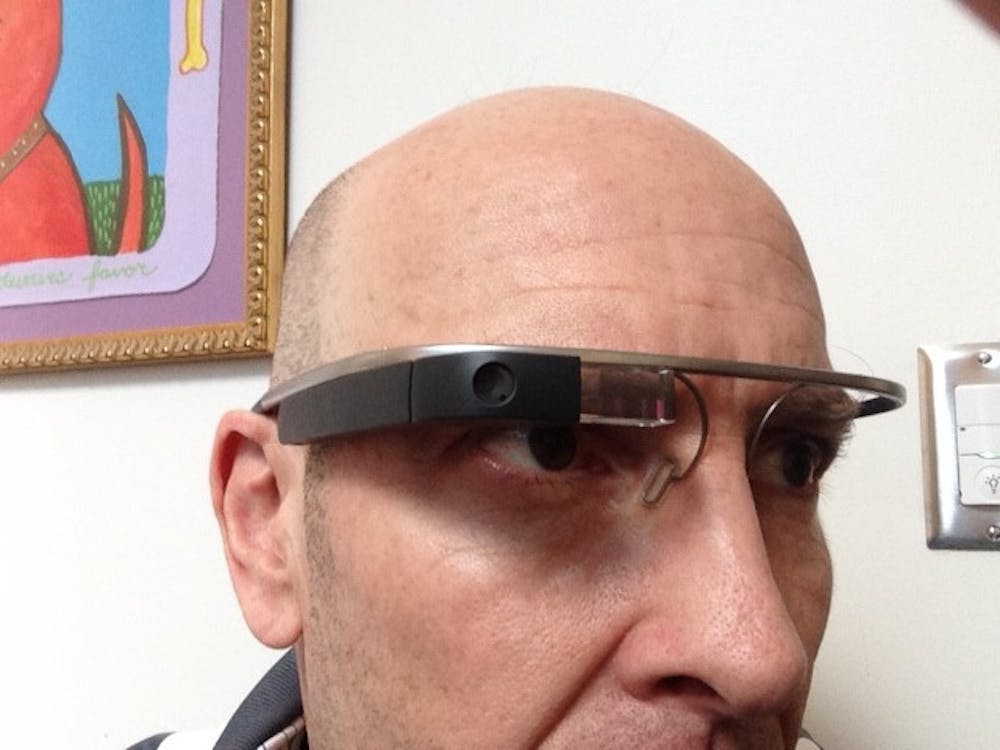An SOC professor is exploring the role Google Glass may play in an academic environment.
Scott Talan, a professor of public relations and social media marketing in School of Communication, sees academic potential in Google Glass, and hopes to bring the futuristic headwear into AU classrooms.
Google Glass was released to the public in mid-April via the Glass Explorers program, but adoption of the wearable tech has been slow given its limited availability.
The AU Library, which currently holds five pairs of the wearable computers, allowed Talan to test Google Glass in his Social Media Strategies and Tactics class. After preliminary demos with his students, Talan is optimistic about its integration into the classroom.
“For journalism students, or those doing field research, Glass has high potential,” Talan said.
Talan first encountered Google Glass when he noticed librarian Joey Fones demonstrating a pair in fellow Professor Amy Eisman’s class. Talan then asked Fones to conduct a similar demo for his own students and expressed interest in integrating the technology into future classes.
“Once I found out we had several pairs of Glass, I said, ‘Let’s let the students use it, give their suggestions and see how they can see Glass being used,’” Talan said. “Yes, it’s ‘cool,’ but you have to get beyond that and see if there’s something of benefit to learning, teaching, to the class as a whole.”
But students looking to rent the futuristic Glass may be disappointed. The library’s rental policy depends on feedback from professors like Talan, who remains unsure about exactly if and how Glass will fit into the classroom. The University will continue to loan professors pairs of Glass in exchange for input on how AU can integrate the technology into curricula.
After several professors expressed interest in the Explorers program, the AU Library acquired five pairs of Google Glass in February. Deciding how the school will release this technology to the AU community has been tricky.
“A key development for us is that Google has recently changed their terms and conditions,” Fones said. “They made it clear that it’s OK for libraries to loan out this technology, so long as they’re not making money off it.”
He explained that while the library plans to begin loaning pairs of Glass out over the summer, they do not expect to be loaning to students anytime soon.
“Students with the blessing of the faculty may be an exception, if the faculty works with them to write a proposal for a project or something like that,” Fones said. He pointed out that anything hands free, “like a biology or chemistry lab, something where first-person point of view is very helpful,” may be a classroom application for Google Glass.
When asked about its use in the classroom, however, Talan paused.
“I still need to use it and think about it more…it’s a big question mark right now,” he said.
He hopes to continue testing Glass, and feels that early adoption and persistent use is the best way to fully realize the potential of wearable tech.
“It’s like Twitter, which launched in 2007, where no one – not even college students – was really on board yet. But I stuck with it [for use in class], and I’m glad I did,” he said. “But early on it’s never clear how viable the technology will be.”





